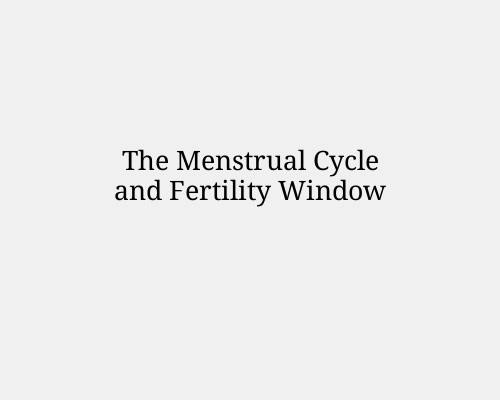
The menstrual cycle is a complex physiological process that prepares a woman's body for pregnancy each month. Understanding the cycle and the fertility window can help women track ovulation, optimize conception efforts, or practice natural birth control methods.
Phases of the Menstrual Cycle
A typical menstrual cycle lasts between 21 and 35 days, with an average of 28 days. It is divided into four key phases:
Menstrual Phase (Days 1-5)
The cycle starts with menstruation, which occurs when the uterus sheds its lining due to the absence of a fertilized egg.
Menstrual bleeding typically lasts 3 to 7 days.
Oestrogen and progesterone levels are at their lowest.
Follicular Phase (Days 1-14)
Begins on the first day of menstruation and lasts until ovulation.
The pituitary gland releases follicle-stimulating hormone (FSH), which stimulates the growth of follicles in the ovaries.
Each follicle contains an egg, but usually, only one matures and becomes dominant.
Oestrogen levels increase, leading to the thickening of the uterine lining (endometrium).
Ovulation Phase (Around Day 14 in a 28-Day Cycle)
A surge in luteinizing hormone (LH) triggers the release of a mature egg from the ovary.
The egg travels down the fallopian tube and can be fertilized for 12 to 24 hours.
This is the most fertile period of the cycle.
Luteal Phase (Days 15-28)
After ovulation, the empty follicle forms the corpus luteum, which secretes progesterone to prepare the uterus for implantation.
If fertilization does not occur, the corpus luteum disintegrates, causing hormone levels to drop.
This triggers menstruation, restarting the cycle.
The Fertility Window: Best Time to Conceive
The fertility window refers to the days in the cycle when conception is most likely. This includes:
The 5 days before ovulation (sperm can survive up to five days in the reproductive tract).
The day of ovulation (egg is viable for 12-24 hours after release).
The day after ovulation, though the chances significantly decrease.
How to Identify the Fertile Window
Women can track ovulation using several methods:
Calendar Method – Estimating ovulation based on the cycle length (generally 14 days before the next period).
Basal Body Temperature (BBT) – Slight rise in body temperature (0.5°F to 1°F) after ovulation.
Cervical Mucus Changes – Fertile mucus is clear, stretchy, and egg-white-like.
Ovulation Predictor Kits (OPKs) – Detect LH surges before ovulation.
Understanding Fertility and Cycle Irregularities
Factors Affecting the Menstrual Cycle:
Stress and Lifestyle – High stress, poor diet, and lack of sleep can cause irregular cycles.
Medical Conditions – Polycystic ovary syndrome (PCOS), thyroid disorders, and endometriosis may disrupt ovulation.
Age – Fertility declines with age, especially after 35.
Medications – Birth control pills and hormonal treatments can alter cycle patterns.
Irregular Cycles and Conception
If cycles are irregular, predicting ovulation can be challenging. Women with irregular periods should:
Track symptoms for several months.
Consult a doctor if cycles are consistently outside the 21-35 day range.
Consider medical tests to rule out underlying conditions.
Final Thoughts
Understanding the menstrual cycle and the fertility window is crucial for reproductive health, whether planning a pregnancy or avoiding conception. Monitoring ovulation through natural signs or medical tools can help women make informed decisions about their fertility.